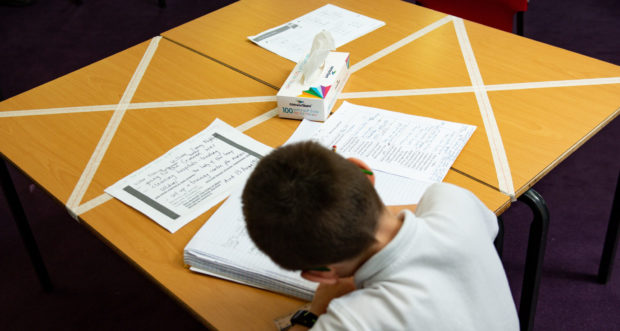With Scottish pupils set to return to school next month, parents and teachers are facing the daunting task of preparing for what lies ahead for them.
While the start of a new school year is a challenging time in itself, combined with the recent lockdown experience students are facing a truly unique scenario. Approaching the coming weeks with patience, kindness and open communications will help.
Going back to school generally means transitioning from relatively unscheduled holiday time to a set schedule of classes, activities and breaktime. (Re-)adjusting to this degree of structure takes pupils a few days. They may struggle to wake up in the morning or need reminding to do their homework and pack school bags in the evening.
This year, teachers, pupils and parents have had a much longer period of unstructured time than in other years. Many have been in lockdown since March, and while parents will have established some semblance of routine for homeschooling and working from home, it’s likely less stringent than a school day. Like any major changes, introducing a lockdown routine took time. Once in place, sticking to a routine allows us to relax and have a sense of certainty and predictability in our lives.
Letting go of that, whether it is to come out of lockdown or go back to school, may leave you and your kids feeling relieved, anxious, excited and scared – all at the same time.
It’s important to reassure your kids that the emotions they are experiencing are valid.
There is no right or wrong way of feeling about returning to school, and one of the best things you can do for yourself and your family is to be open about how you feel. This will help your kids to share their concerns about returning to school.
Talk about expectations for the new school year: many schools have notified parents about the changes made to provide a safe learning environment. In most schools, safety means keeping a distance.
Your kids may not be able to socialise with all of their friends immediately. They may be asked to work or play on their own, even though they travelled to school together. While you may not be able to predict each detail of their school day, it’s worth talking about what differences to expect.
While our under 12s are thankfully not needing to practice social distancing at this time, returning to school ‘normally’ means having a schedule set out for months ahead and schools are bound to adjust their policies throughout the year. Teachers, parents and students themselves will likely face challenging times with class schedules, room layouts and more as schools navigate their way to a ‘new normal’.
Some pupils will return to school having lost friends and family members to the virus.
They may be experiencing grief and learning to live without that person. Preparing your children for this and letting your kids know how grief may be expressed will help them support their friends. Others may have experienced family breakdown, or other stressful times at home, and they may require equal understanding and support.
Some children will return but may present as less happy and more introvert than they were before or display new behavioural issues. They may have a lot of emotional turmoil they are trying to deal with as well as the environmental readjustment at school.
And what about the virus itself?
Increased social contact is likely to lead to a spike in Covid-19 cases, and it is normal to feel anxious about that. Schools will have precautionary measures in place. However, establishing – for example – a handwashing routine at home will create a habit ahead of time and help your kids be ready for their new school year.
As teachers and families are heading back to work and school, respectively, it’s key to be open to change and continue to adjust to new situations with a positive and upbeat attitude. Letting your kids know that you are navigating the same challenges and talking about your own feelings and how you are managing them will make it easier for them to share and cope with the year ahead.
Professor Ewan Gillon is a Chartered Psychologist and Clinical Director of First Psychology Scotland with centres in Aberdeen and Inverness

